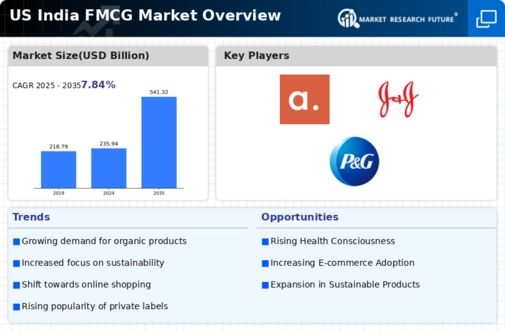US India FMCG Market Summary
The US India FMCG Market is projected to grow from 235.94 USD Billion in 2024 to 541.32 USD Billion by 2035, reflecting a robust growth trajectory.
Key Market Trends & Highlights
US India FMCG Market Overview Key Trends and Highlights
- The market is expected to expand at a compound annual growth rate of 7.84 percent from 2025 to 2035.
- By 2035, the market valuation is anticipated to reach 541.32 USD Billion, indicating substantial growth opportunities.
- The base year valuation of 235.94 USD Billion in 2024 sets a strong foundation for future market expansion.
- Growing adoption of e-commerce due to increasing consumer preference for online shopping is a major market driver.
Market Size & Forecast
| 2024 Market Size | 235.94 (USD Billion) |
| 2035 Market Size | 541.32 (USD Billion) |
| CAGR (2025 - 2035) | 7.84% |
Major Players
Apple Inc (US), Microsoft Corp (US), Amazon.com Inc (US), Alphabet Inc (US), Berkshire Hathaway Inc (US), Meta Platforms Inc (US), Tesla Inc (US), Johnson & Johnson (US), Visa Inc (US), Procter & Gamble Co (US)














Leave a Comment